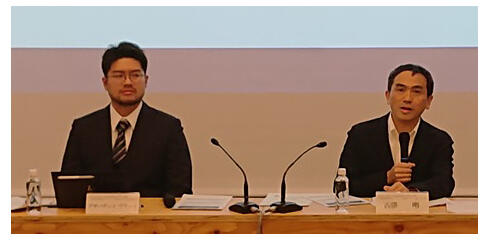A major step toward the realization of a general-purpose optical quantum computer has been announced. A research team led by Graduate Student Shunya Konno (at the time of research), Assistant Professor Warit Asavanant, and Professor Akira Furusawa of the School of Engineering at the University of Tokyo, the National Institute of Information and Communications Technology (NICT), RIKEN, Assistant Professor Petr Malek and Professor Radim Filip of the Palacký University in the Czech Republic, and Professor Peter van Loock of the University of Mainz generated the world's first Gottesman-Kitaev-Preskill (GKP) qubit, a logical qubit from propagating light. Furusawa commented, "Combined with the large-scale quantum multiplication that we have achieved so far, we can now achieve a large-scale error-tolerant optical quantum computer, and we hope to launch the venture company OptQC in September to promote social implementation." The results were published in Science.

Current computers have error-tolerance features to prevent the influence of errors. For example, several identical processes are performed simultaneously, and the output with the highest number is the correct one. Since a similar method is used in quantum computers, such as superconductors, error correction requires the use of a large number of physical qubits to create logical qubits. This is a major barrier to the realization of error correction.
In the field of optical quantum computers, the GKP qubit has been seen as a promising candidate. The reason for this is that it uses a single optical pulse as a physical qubit to achieve one logical qubit. However, strong nonlinearity is necessary to realize the structure of GKP qubits. Unlike stationary systems, such as superconductors or ion traps, it is difficult to amplify nonlinearity in propagating waves. This has been one of the major challenges in realizing logical qubits in optical quantum computers.
In this study, the GKP state was generated optically using a photon detector (quantum efficiency 75% of approximately, timing jitter 70 ps) developed in collaboration with NICT. In the experiment, a Schrödinger's cat state (a superposition of classical laser beams with inverted phases) was first generated to produce the GKP state. This state, although a highly quantum state, has a different structure than that of the GKP state. Therefore, the research team used linear optical elements that were easily implemented in optical systems to shape its structure. As a result, they succeeded in forming a GKP state with a specific number and sharpness of peaks.
In this study, the GKP state was generated in one step, but the same method can be repeated to increase the number of peaks. Originally, the GKP qubit of light contains numerous photons, and owing to their quantum entanglement, the probability of error generation is extremely low. Furthermore, generating a larger number of pulses (GKP qubits) is a major step toward realizing an error-tolerant optical quantum computer.
The research team has successfully demonstrated a quantum computing platform capable of performing large-scale quantum operations for optical quantum computers. Additionally, they have achieved multiplication in quantum states by combining semiconductor circuits. With the generation of the GKP qubits, the parts required to realize an error-tolerant optical quantum computer are now in place.
Furusawa and his team will launch a start-up company OptQC this September. Assistant Professor Kan Takase will be appointed as the CEO, and Asavanant will be appointed as the CTO. First, the company will build an AI infrastructure in a neural network using a large-scale optical quantum network.
Takase stated, "We want to unearth and commercialize the demand for AI as a first step, leading us to the next stage."
Asavanant added, "The large-scale neural network is one step toward realizing a large-scale optical quantum computer."
Journal Information
Publication: Science
Title: Logical states for fault-tolerant quantum computation with propagating light
DOI: 10.1126/science.adk7560
This article has been translated by JST with permission from The Science News Ltd. (https://sci-news.co.jp/). Unauthorized reproduction of the article and photographs is prohibited.




